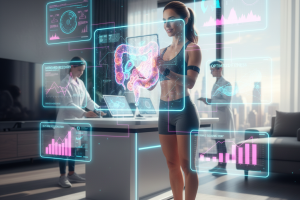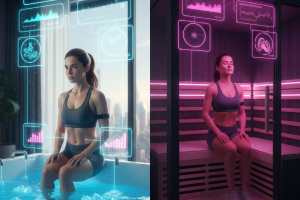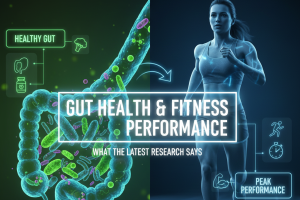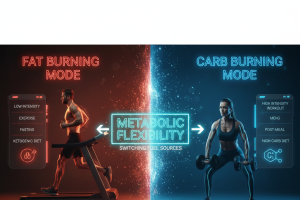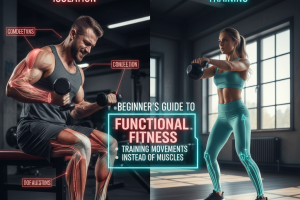How Micro-Workout Sessions Throughout the Day Improve Metabolism

How Micro-Workout Sessions Throughout the Day Improve Metabolism
Finding the time to do standard hour-long exercises might be difficult for those who lead busy lives nowadays. One option that is becoming more popular as a viable alternative is the practice of engaging in short bursts of physical activity throughout the day, known as micro-workouts. These exercises, which are brief and focused, take anywhere from three to fifteen minutes to do. It has been shown that they may help to increase metabolism, improve the health of the cardiovascular system, and increase energy levels without the need for prolonged gym sessions. Micro-workouts are a realistic and scientifically proven technique for preserving physical health and metabolic efficiency, and they do this by incorporating activity into everyday activities.
Understanding the Science of Short-Duration Exercise Regimens
Taking advantage of the fact that the body’s metabolic processes are constantly activated during the course of the day by frequent, moderate-intensity exercise is the primary benefit of micro-workouts. Each session causes the muscles to engage, the heart rate to rise, and blood circulation to improve. This, in turn, improves the body’s capacity to burn calories and process nutrients in an effective manner. Multiple brief bouts of physical activity are more effective than a single, longer exercise session for preventing metabolic slowdowns, maintaining high energy expenditure, and minimizing the negative consequences of sitting for extended periods of time, which is a well-established factor in weight gain and insulin resistance.
Pathways of Energy and Muscle Activation
Even small periods of activity involve many muscle groups, which leads to an increase in the absorption of glucose, the use of glycogen, and the consumption of oxygen. The basal metabolic rate is increased throughout the course of time as a result of the fact that mitochondria, which are the structures in the cell that are responsible for the production of energy, are able to operate effectively due to this frequent activation. In addition to this, the practice of engaging in micro-workouts leads to the synthesis of important metabolic enzymes and hormones, including catecholamines and growth hormones. These substances are essential in the processes of fat metabolism, muscle repair, and energy management.
Enhancing Insulin Sensitivity as well as Blood Sugar Regulation
There is evidence that suggests that when insulin sensitivity is increased and blood sugar levels are stabilized, short bursts of exercise that are spread throughout the day are effective. The signals that muscles get during each micro-workout session allow them to more effectively absorb glucose from the circulation, which prevents rises in blood sugar levels after meals. This action not only helps with the control of weight, but it also decreases the likelihood of developing metabolic illnesses, such as type 2 diabetes.
Advantages for the Cardiovascular and Circulatory Systems
By increasing heart rate and blood flow many times a day, micro-workouts enhance circulation and build cardiovascular function. Oxygen and nutrients are delivered more efficiently to tissues via enhanced circulation, which in turn supports metabolic activities and the creation of energy as a whole. The frequent boosts to circulation that occur over time lead to improvements in vascular resilience, a decrease in blood pressure, and better overall heart health.
Regulation of Hormones and the Mitigation of Stress
In addition, being constantly on the move throughout the course of a day has a good impact on chemicals that are associated with stress, such as cortisol. By offering brief intervals of physical effort that alleviate stress and enhance mood, micro-workouts may assist in the regulation of cortisol levels. Metabolism is strongly related to hormonal balance. When stress hormones are brought under control, the body is able to maintain a more consistent energy balance and make better use of the nutrients it consumes.
Incorporation into Regular Activities
The capacity to adjust to a situation is one of the significant benefits of micro-workouts. They are able to be included into brief pauses throughout the workday, domestic tasks, stair climbing, quick walks, or even basic bodyweight workouts. The advantages may be increased by using equipment such as resistance bands, dumbbells, or even movement routines that can be performed at a desk. The metabolic benefits of these short sessions will build over time if they are consistently integrated, which will allow for an impact that is equivalent to that of longer exercises without the need to disturb regular routines.
Promoting Weight Management and Fat Loss
Micro-workouts are beneficial in the prevention of weight gain and the promotion of fat reduction due to the fact that they enhance total daily energy expenditure and sustain metabolic activity. Research has shown that exercising in many short sessions on a regular basis may be just as effective—and may even be more effective—than engaging in one long exercise session in terms of increasing the oxidation of fat and the rate at which calories are burned. This is especially significant for those who are employed in sedentary occupations or those who are on the lookout for effective methods of managing their weight.
Advantages Connected to Mental Concentration and Productivity
Micro-workouts have the added benefit of enhancing mental alertness and attention, in addition to providing metabolic benefits. Short bursts of physical activity cause an increase in the amount of blood that is flowing to the brain, which provides oxygen and nutrients that improve cognitive performance. These advantages to mental health indirectly enhance metabolic health by promoting lifestyle choices that are more conducive to health, such as practicing mindful eating and engaging in more physical activity throughout the day.
Prospects for the Future of Customized Workout Regimens
Because of the increasing popularity of wearable technology and health monitoring applications, micro-workouts may be tailored to maximize metabolic results based on individual measurements such as heart rate, calorie burn, and activity patterns. Customized micro-workout routines could eventually become an essential component of holistic health programs, which integrate physical activity, dietary habits, and recuperation techniques to achieve the highest level of metabolic efficiency.
It has been scientifically shown that doing short-duration exercise sessions throughout the day is a practical way to boost metabolism, control blood sugar, improve cardiovascular health, and maintain a healthy weight. Without the need to devote significant periods of time to physical activity, people may maintain continuous energy expenditure, stimulate muscle and hormone activity, and get long-term health advantages by incorporating brief bursts of movement into their everyday routines. As scientific investigation proceeds, there is a good chance that micro-workouts will become a crucial element of contemporary, effective methods for achieving metabolic health and physical fitness.
